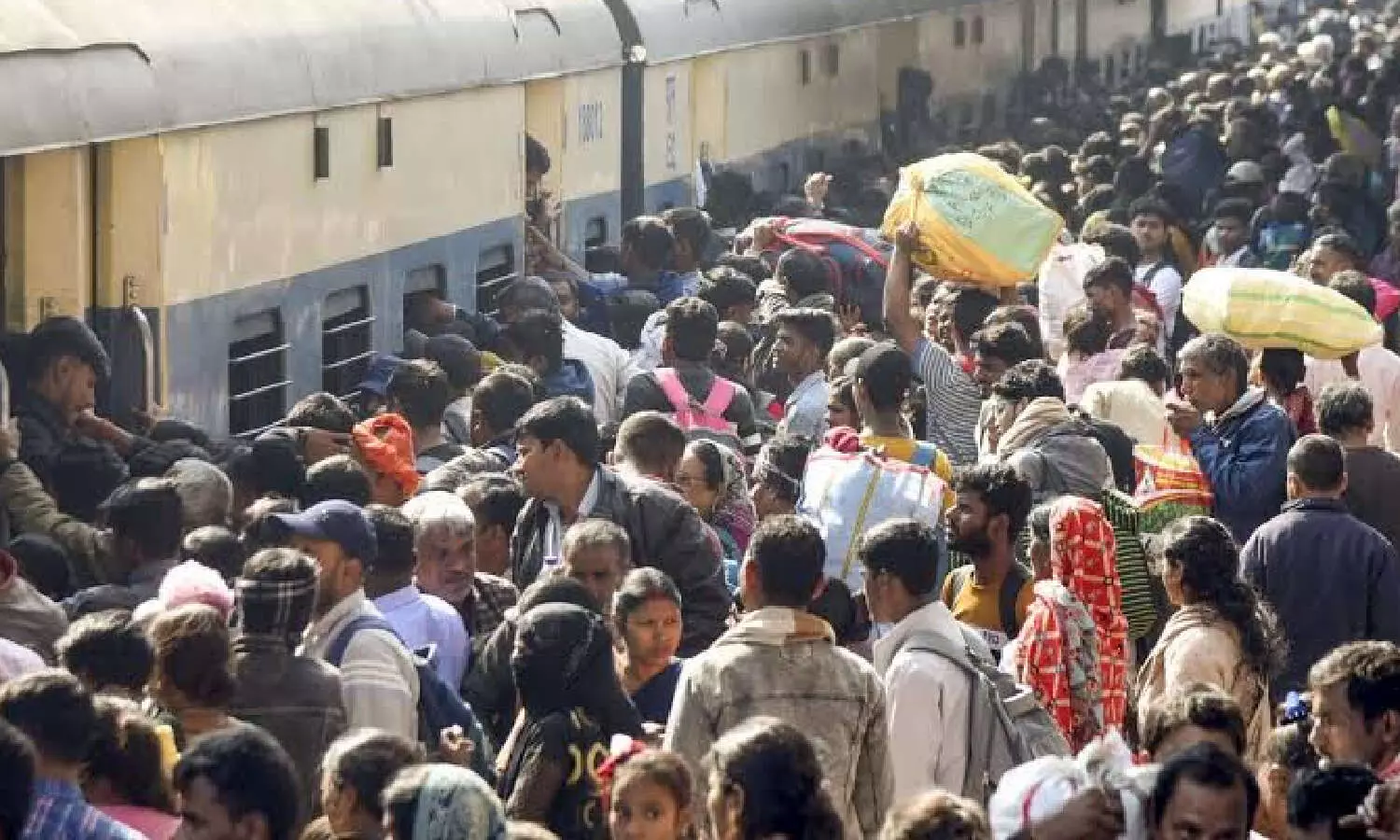Safe trains: Indian Railways launches crowd management plan across 73 major stations
No overcrowding, safer travel: Indian Railways introduces crowd management plan across 73 major stations
By Sistla Dakshina Murthy
Safe trains: Indian Railways launches crowd management plan across 73 major stations
New Delhi: Indian Railways has introduced a comprehensive crowd management plan across 73 major stations in the country to prevent overcrowding and ensure safer travel during peak seasons.
Union Railway Minister Ashwini Vaishnaw informed the Rajya Sabha that the initiative is based on past experiences during high-footfall events and aims to decongest station premises through both infrastructure upgrades and administrative reforms.
Station directors to take charge with more powers
Senior officers will now be posted as Station Directors at all 73 key stations identified for high crowd density.
These officials will be given financial and operational authority to make real-time decisions during crowd surges, including restricting ticket sales based on platform capacity and train availability.
All departments at the station level will report to the Station Director for swift and unified action.
Confirmed tickets to get platform access; waitlisted to wait outside
To regulate crowd flow, access control measures will be introduced. Only passengers with confirmed reserved tickets will be allowed onto the platforms.
Those with waitlisted or no tickets will be required to wait in specially designated holding areas outside the station premises until their train arrives. Unauthorized entry points will be sealed to prevent overcrowding.
Permanent holding areas to decongest platforms
After successful trials during the 2024 festive rush and the Mahakumbh, Indian Railways will now establish permanent holding zones outside the identified stations.
These waiting areas are meant to manage passenger entry in a phased manner and keep platforms free from congestion. Pilot projects for these zones have already begun at New Delhi, Anand Vihar, Varanasi, Ayodhya, and Ghaziabad.
Wider foot-over bridges for smoother passenger movement
To facilitate smoother and safer crowd dispersal, Railways has introduced two new standard designs for wide foot-over bridges (FOBs), measuring 12 metres (40 feet) and 6 metres (20 feet) respectively.
These wider bridges, equipped with ramps, proved highly effective in previous mass gatherings and will now be implemented at high-traffic stations nationwide.
War rooms and surveillance to monitor crowd dynamics
Dedicated war rooms will be set up at major stations where officers from various departments will work in tandem during high-rush periods. Additionally, CCTV cameras will be installed throughout the station premises and adjoining areas to allow real-time monitoring and quick response during emergencies.
Upgraded communication and alert systems
To improve coordination among staff, the stations will be equipped with the latest digital communication tools such as walkie-talkies, advanced public announcement systems, and integrated calling devices. These upgrades aim to ensure rapid dissemination of information and instructions during peak rush.
Distinctive uniforms and ID cards for easy staff identification
All railway staff and service personnel at these busy stations will be issued newly designed uniforms and ID cards. This will help passengers easily identify authorised personnel and ensure that only staff with valid credentials have access to restricted areas.
Coordination with law enforcement and intelligence units
To further streamline crowd control efforts, Indian Railways is working in close coordination with the Government Railway Police (GRP), Railway Protection Force (RPF), and local state police. Security personnel will be stationed at foot-over bridges and high-risk zones to manage crowd flow. Plainclothes intelligence units will also monitor rush build-up and provide alerts for preventive action.
Ticket sales to be regulated based on station capacity
In a significant step, the Station Director will be authorised to restrict or pause ticket sales when passenger load exceeds the station’s handling capacity or when the number of available trains is inadequate to accommodate more passengers.
A Holistic approach to festival and rush-hour travel
This multi-pronged strategy marks a paradigm shift in how Indian Railways is preparing for the upcoming festival travel season. By combining infrastructure improvements, administrative decentralisation, and technology-based monitoring, the national transporter aims to ensure a safer, more organised, and passenger-friendly environment at the country’s busiest railway stations.